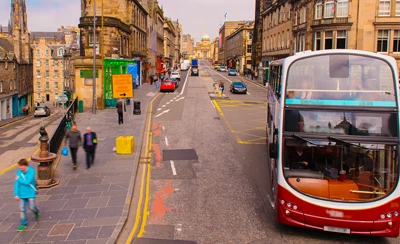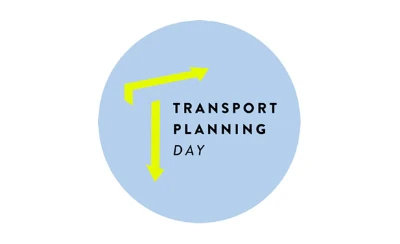Mileage-based road pricing: fiscal necessity or demand management tool?
Road pricing is not a new topic for the Transport Planning Society, and many are the TPS members who have argued over the years for various forms of pricing as a means to manage demand for access to the road network in an economically efficient manner. More recently, however, the road pricing debate has shifted from demand management to revenue-raising. This shift is illustrated by last year’s Wolfson Prize, which reinvigorated the road pricing debate by asking “how can we pay for better, safer, more reliable roads in a way that is fair to road users and good for the economy and the environment?”
TPS was therefore delighted to invite Gary Raccuja, last year’s winner of the Wolfson prize to present his proposal on Wednesday 31st January 2018. His winning paper was entitled Miles Better: Replacing Fuel Duty and VED with a Mileage-based Road Tax, collected by insurers (see reference below). In a fascinating debate chaired by former chair of the RAC Foundation, David Quarmby, Kris Beuret of Social Research Associates and Paul Buchanan of Volterra responded to Gary’s proposal.
The background to the Wolfson paper is the predicted growing funding gap as the electrification of the vehicle fleet gradually erodes fuel duty income. This also represents a conceptual gap where the link between road use and the revenue to pay for maintenance and externalities is broken. Gary’s paper argues that from a fiscal point of view, pay-by-mile road pricing is the fairest way to charge for road use and is a financially sustainable solution where revenue is in line with overall usage.
While mileage-based pricing may be a fair method of raising revenue, many transport economists would argue that a standard mileage charge varying only by vehicle characteristics (as Gary proposes) does not necessarily achieve optimum outcomes. It is by varying charges by time and geography that transport planners can target congestion and other adverse effects of road use (air pollution, noise), and encourage behaviour change. Is it true therefore that time-based charges are genuinely so unpopular? In recent research, Kris argues that when presented with relevant facts to inform their decisions, many – probably a majority – of citizens accept that time-based charges can be a more equitable way of paying for road use.
Another principle of Gary’s winning paper was that the scheme should be administered by insurance companies as an add-on to payment for insurance. Since the insurance companies are already investing in the collection of data on drivers’ behaviour, this solution could offer significant cost saving and overcome trust issues. However, public opinion on the relative trustworthiness of government and private companies is far from united (see ITC reference below) and this theory would need to be tested.
By initially offering a choice between paying a lump sum fee (described by Gary as ‘low-tech’) or a mileage-based fee (described as high-tech, using telematics), which for many would be cheaper, users could be incentivised (but crucially not forced) to adopt high-tech over low-tech solutions. In a world where consumers are reluctantly accepting that their every move is tracked by their smartphones, attitudes to privacy are unlikely to prove the ultimate stumbling block to mileage-based charges in the future. Indeed, ease of payment may be the tipping point in public attitudes towards road pricing in principle.
The hypothecation or ring-fencing of revenue is an important principle for many road pricing proponents. Should revenues be hypothecated for road network maintenance only? Should they be used to support expenditure on alternative modes of transport to reinforce the mode shift incentives of pricing, and lessen the impact on lower income travellers? Or should revenue be channelled to the health budget to compensate society for the externalities of road use?
The renewed interest in road pricing will be music to the ears of many in the Transport Planning Society, and the background of falling fuel duty revenues means that fiscal reform in this field is almost a certainty at some stage. Yet the debate on the role of road pricing appears to be evolving. It seems that the newly emboldened Metro-mayors may have the greatest appetite for road pricing as a demand management tool, along with the cash-strapped and over-Uberred London Mayor. Elsewhere, however, only the standard mileage charge would apply: the growing consensus appears to be for this to be a revenue-raising solution to fund the maintenance of the road network, and for many its continued expansion.
The two options are not mutually exclusive. We could envisage a city or city-region supplementary pricing scheme being introduced by a Metro-mayor, on top of a nationwide standard mileage-charge system of the kind proposed by Gary (introduced by central government). The same idea of a targeted supplement could be introduced by Highways England on the motorway network.
The potential longer term behavioural and land use impacts of a mileage-based road pricing system need further assessment, especially if used to fund more car-centric development patterns. This debate runs to the core of spatial and transport planning principles, and the TPS needs to re-evaluate its positions in relation to a shifting policy landscape.
Further reading:
Gary Raccuja’s winning paper can be found on the Wolfson prize website, along with the other short-listed papers including that by Paul Buchanan.
Kris Beuret’s research on Paying for Roads and Road Use for the Independent Transport Commission is available here.













